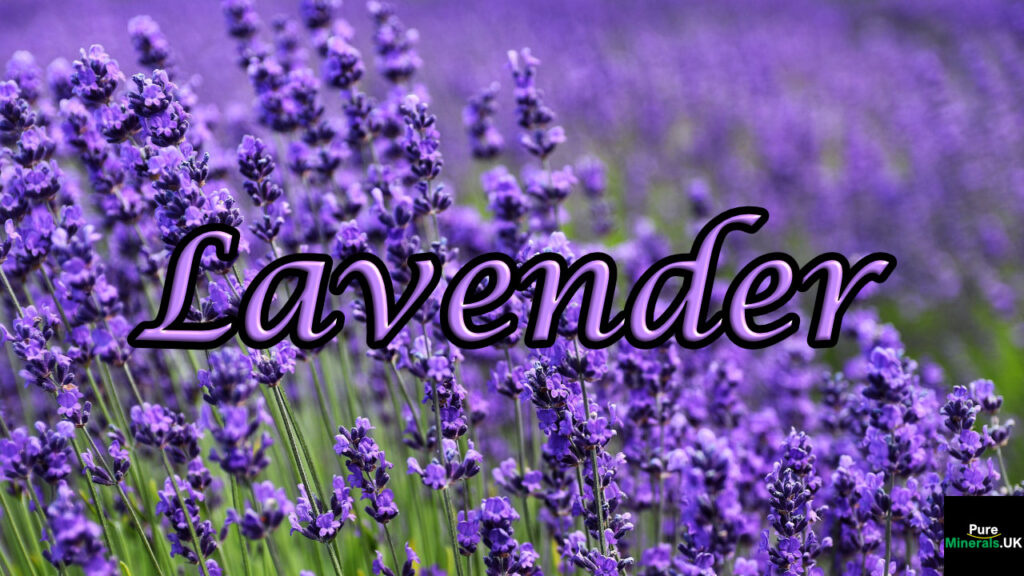
Key Takeaways
- Lavender’s active compound, linalool, directly impacts brain chemistry to reduce anxiety and stress by interacting with neurotransmitters and lowering blood pressure.
- Research shows that 30 minutes of lavender aromatherapy can significantly improve anxiety, depression, and stress levels, particularly in older adults.
- Beyond relaxation, lavender offers practical benefits for sleep quality, headache relief, and skin health when used in various forms, from essential oils to culinary applications.
- Culinary lavender adds a unique floral dimension to both sweet and savory dishes, but requires specific varieties and careful measurement to avoid a soapy taste.
- Whether grown at home or purchased, lavender provides a versatile and accessible natural remedy for everyday wellness concerns with minimal side effects.
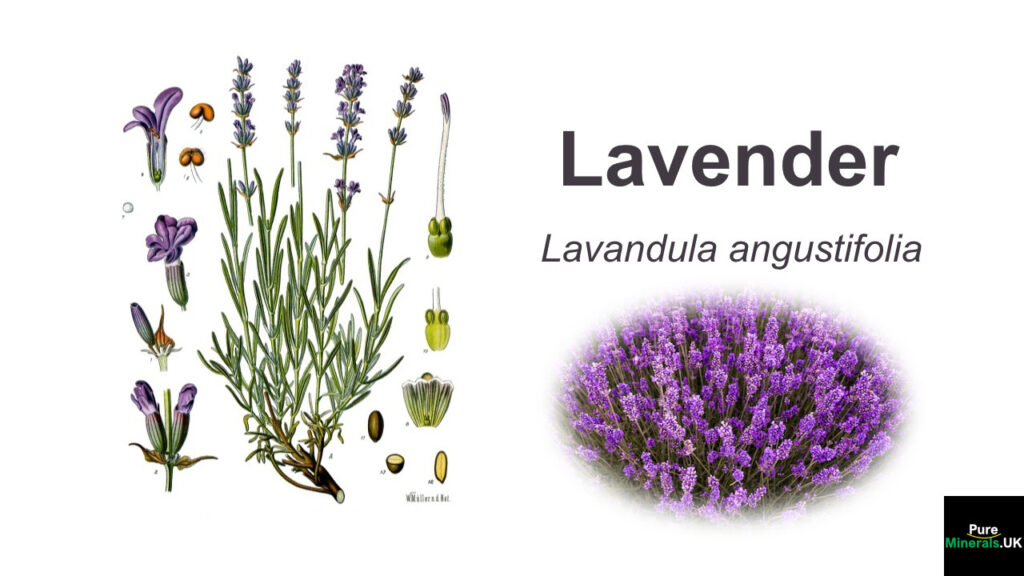
Lavender’s Mood-Boosting Power: Science Behind The Scent
The gentle purple flowers of lavender do more than just look and smell beautiful. When inhaled, lavender’s aromatic compounds trigger a cascade of responses in your brain and nervous system that can transform your mental state within minutes. This isn’t just folklore or wishful thinking – it’s backed by increasing scientific evidence showing how this humble flower affects our neurochemistry.
Lavender has been treasured for thousands of years, but modern research is finally explaining why our ancestors were right to value it so highly. From the temples of ancient Egypt to today’s clinical studies, lavender’s ability to soothe the mind remains consistent across cultures and centuries. The power of this plant lies in its unique biochemical profile that interacts with our bodies in multiple beneficial ways.
How Lavender Affects Your Brain Chemistry
When you breathe in lavender’s scent, its compounds take a direct route to your brain through the olfactory system. This bypasses the blood-brain barrier, allowing for immediate effects on your nervous system. The primary impact occurs in the amygdala and hippocampus – regions responsible for emotional regulation and memory processing. Within moments of inhalation, lavender actively lowers heart rate and blood pressure, triggering the parasympathetic nervous system (your “rest and digest” mode).
The science is particularly compelling regarding lavender’s effect on anxiety. Studies show that lavender compounds bind to certain receptors in the brain that help regulate anxious feelings – similar to how some anti-anxiety medications work, but without the side effects or dependency risks. This helps explain why simply inhaling lavender can create noticeable calm during stressful situations.
What’s especially interesting is how lavender provides dual benefits – it’s both calming and mentally clarifying. Unlike some substances that relax by essentially dulling mental function, lavender promotes a state of alert tranquility. This makes it particularly valuable for situations requiring both relaxation and clear thinking, such as before important meetings or creative work.
The Linalool Effect: Why This Compound Matters
At the heart of lavender’s therapeutic properties is linalool, a natural compound that gives the plant much of its characteristic scent and benefits. This terpene alcohol makes up about 25-38% of lavender essential oil and has been extensively studied for its effects on the human nervous system. When isolated and tested, linalool demonstrates remarkable anxiolytic (anti-anxiety) properties even without the other compounds present in whole lavender.
Linalool works by influencing GABA pathways in the brain – the same system affected by anti-anxiety medications like benzodiazepines, but through gentler mechanisms. It essentially turns down the volume on nervous system activity without completely shutting it off. This explains why lavender helps you feel calmer without making you feel sedated or mentally foggy.
Beyond anxiety relief, linalool has shown promising effects for pain management, anti-inflammatory response, and even antimicrobial properties. This single compound exemplifies why natural plant medicines can be so valuable – they often contain multiple beneficial compounds that work together in ways synthetic medications cannot replicate. The linalool in lavender works synergistically with other components like linalyl acetate to create its full therapeutic profile.
Research-Backed Benefits for Anxiety and Depression
The scientific evidence for lavender’s mental health benefits has grown substantially in recent years. A randomized trial from 2020 found that breathing in lavender essential oil for just 30 minutes significantly improved levels of anxiety, depression, and stress in older adults. These findings align with earlier research showing lavender’s effectiveness for generalized anxiety disorder, with results comparable to prescription medications but without the side effects.
For depression, lavender appears to offer meaningful support through multiple pathways. Its compounds influence serotonin transporters in the brain – the same targets of many antidepressant medications. While not a replacement for medical treatment of clinical depression, lavender provides gentle mood support that many find helpful for everyday emotional balance. The connection between improved sleep (another lavender benefit) and reduced depressive symptoms creates a positive feedback loop for mental wellness.
What makes these findings particularly valuable is the accessibility and safety profile of lavender compared to pharmaceutical interventions. Many people who cannot tolerate medication side effects or who prefer natural approaches find lavender provides meaningful relief without significant downside. The research continues to evolve, but the current evidence base makes lavender one of the most scientifically-validated botanical supports for emotional wellness available today.
5 Ways to Use Lavender for Better Sleep Tonight
Sleep troubles affect millions of people, but lavender offers one of nature’s most effective solutions. The plant’s sedative properties come from its ability to slow down the central nervous system activity and increase slow-wave sleep – the deep, restorative phase that helps you feel truly rested. Unlike many sleep aids that leave you groggy the next day, lavender promotes natural sleep patterns without morning-after side effects.
Integrating lavender into your bedtime routine doesn’t require elaborate preparations or expensive products. Simple, consistent applications yield the best results, especially when used as part of a calming pre-sleep ritual. The key is finding which method works best for your preferences and sleep challenges.
- Inhale lavender essential oil directly from the bottle for 5-10 deep breaths before bed
- Apply diluted lavender oil (mixed with a carrier oil) to temples and wrists
- Use lavender-filled sachets tucked inside pillowcases
- Drink lavender tea 30-45 minutes before bedtime
- Take a warm shower with lavender-infused products before sleep
Consistency matters more than intensity with lavender use. Your brain and body will begin to associate the scent with relaxation and sleep, creating a powerful conditioned response that enhances the plant’s natural effects over time. This makes lavender particularly effective as a long-term sleep solution rather than just an occasional remedy.
1. Pillow Sprays That Actually Work
Creating your own lavender pillow spray delivers sleep benefits without the markup of commercial products. Simply fill a small spray bottle with 2 oz distilled water, 1 tablespoon witch hazel (as a preservative), and 10-15 drops of pure lavender essential oil. Shake well before each use and lightly mist your pillow 15 minutes before bedtime to allow some evaporation.
The key to an effective pillow spray lies in using true lavender (Lavandula angustifolia) rather than lavandin or other varieties that contain camphor, which can be stimulating rather than calming. Quality matters here – look for essential oils that specify their exact lavender species and extraction method. For sensitive skin, spray more lightly or test on a small area of the pillowcase first to ensure no irritation occurs.
These sprays work through both inhalation and mild topical absorption as you rest your face against the pillow. The gentle, consistent release of lavender compounds throughout the night helps maintain sleep quality even during natural wake cycles, making it easier to fall back asleep without fully waking. For enhanced effects, pair with other sleep hygiene practices like reducing blue light exposure and maintaining consistent sleep schedules.
2. Bath Soaks for Deep Relaxation
A warm lavender bath before bed creates the perfect conditions for deep sleep by combining aromatherapy with the muscle-relaxing effects of warm water. The ideal preparation includes 1 cup of Epsom salts (magnesium sulfate) and 8-10 drops of lavender essential oil, thoroughly mixed before adding to running bathwater. The Epsom salts not only help disperse the oil but also provide magnesium, which works synergistically with lavender for muscle relaxation and nervous system calming.
For maximum benefit, soak for 15-20 minutes in water that’s warm but not hot (around 100°F), as excessive heat can be stimulating rather than relaxing. The steam from the bath carries lavender compounds directly to your olfactory system while the warm water simultaneously lowers your core body temperature after you exit – creating the perfect physiological conditions for sleep onset. This is particularly effective for people with restless leg syndrome or physical tension that disrupts sleep.
3. Essential Oil Diffusion Methods
Diffusing lavender throughout your bedroom creates an ambient environment that supports gradual relaxation as you prepare for sleep. Ultrasonic diffusers, which use water and gentle vibration rather than heat, preserve the therapeutic properties of lavender oil best. For a standard bedroom, 3-5 drops of oil is sufficient – more isn’t better and can actually be too stimulating.
Set your diffuser to run for 30-60 minutes before bed rather than all night, as continuous exposure can lead to olfactory fatigue, where you stop noticing the scent and lose its benefits. Some diffusers feature automatic shut-off timers specifically designed for bedtime use. Position the diffuser where airflow will distribute the mist throughout the room without blowing directly onto your face during sleep.
For those without a diffuser, placing a few drops of lavender oil on a tissue tucked inside your pillowcase creates a similar effect with zero investment. The heat of your body will naturally warm the oil enough to release its aromatic compounds throughout the night. Just be careful to place the tissue where the oil won’t contact your skin directly.
4. Bedtime Tea Blends Worth Trying
Lavender tea offers a dual approach to better sleep – the ritual of preparing and sipping a warm beverage signals to your body that it’s time to wind down, while the lavender compounds work internally to promote relaxation. The best blends pair lavender with complementary herbs that enhance its sleep-promoting effects without overwhelming its delicate flavor.
A simple but effective recipe combines 1 teaspoon dried culinary lavender buds, 1 teaspoon chamomile flowers, and ½ teaspoon lemon balm in a teapot. Steep for 5-7 minutes in water just below boiling point (around 200°F) for optimal extraction without bitterness. A touch of honey not only sweetens but adds its own sleep-supporting properties. Drink 30-45 minutes before bedtime to allow time for both the relaxation ritual and the compounds to take effect.
5. Lavender-Stuffed Sleep Masks
Lavender-filled sleep masks combine aromatherapy with the sleep-enhancing benefits of darkness. These masks block sleep-disrupting light while positioning dried lavender directly near your olfactory receptors for maximum effect. The gentle weight of the mask also provides mild pressure that many find comforting, similar to a weighted blanket for your eyes.
You can purchase ready-made lavender sleep masks, but making your own allows you to control the filling and fit. Use a soft, breathable fabric like cotton or silk, and fill with a mixture of flaxseeds (which provide weight and can be heated or cooled) and dried lavender buds. Replace the lavender every few months as the scent fades. For sensitive skin, create a removable inner pouch for the lavender to prevent direct contact.
These masks are particularly beneficial for shift workers who need to sleep during daylight hours, or for travelers dealing with jet lag and unfamiliar environments. The portability makes them perfect for creating sleep-friendly conditions anywhere, even in challenging settings.
Culinary Magic: Adding Lavender to Your Kitchen
Lavender’s value extends beyond wellness applications into the culinary world, where it adds a unique floral dimension to both sweet and savory dishes. While its calming properties remain present in food, the gastronomic appeal comes from its complex flavor profile – simultaneously floral, herbaceous, and slightly sweet with subtle citrus notes. This versatility has made lavender a secret weapon of innovative chefs looking to create memorable dishes.
The edible benefits of lavender aren’t just about flavor. When consumed, lavender continues to offer its calming properties, making lavender-infused foods a subtle way to incorporate stress relief into your diet. Evening meals featuring lavender can set the stage for better relaxation and sleep later, while daytime consumption provides gentle anxiety support without sedation.
Culinary vs. Ornamental Lavender: Know the Difference
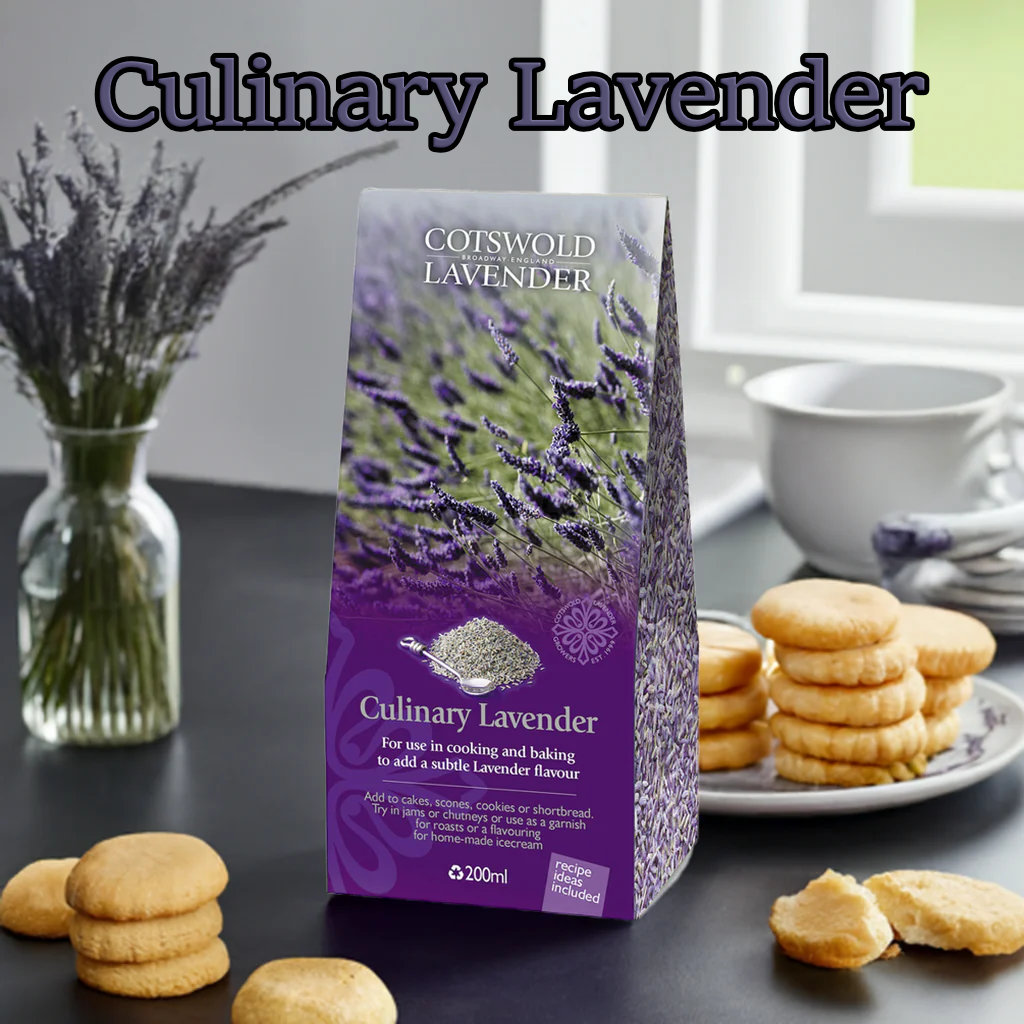
A Pack of Culinary Lavender Grains
Not all lavender is suitable for your kitchen, and using the wrong variety can ruin a dish. Culinary lavender comes primarily from Lavandula angustifolia (English lavender), prized for its sweet, delicate flavor and lower camphor content. Varieties like ‘Hidcote,’ ‘Munstead,’ and ‘Royal Velvet’ are specifically cultivated for culinary use, offering the best balance of flavor without the soapy overtones that make some lavender varieties unpalatable.
Ornamental lavenders, particularly Lavandula x intermedia (lavandin) varieties like ‘Grosso’ or ‘Provence,’ contain higher levels of camphor and can impart a medicinal or soapy taste to foods. While these are excellent for aromatherapy and crafting, they should be avoided in cooking. Always verify that you’re purchasing food-grade lavender specifically labeled for culinary use, as ornamental varieties may have been treated with chemicals not meant for consumption.
Beyond variety, the growing conditions affect flavor significantly. Culinary lavender grown in hot, dry conditions typically develops more concentrated essential oils with better flavor. Organic cultivation ensures you’re not introducing unwanted chemicals into your recipes. When purchasing, look for vibrant color and strong fragrance, indicating freshness and higher essential oil content that will translate to better flavor in your dishes.
Perfect Flavor Pairings for Lavender
Lavender’s distinctive flavor works harmoniously with certain ingredients while clashing with others. It pairs beautifully with lemon, honey, berries, chocolate, sheep’s milk cheeses, and herbs like thyme and rosemary. These combinations balance lavender’s floral notes with complementary flavors that prevent it from overwhelming the palate.
For sweet applications, lavender’s natural affinity for honey creates a classic pairing that enhances both ingredients. The floral notes in honey amplify similar qualities in lavender while adding sweetness that rounds out any potential bitterness. With chocolate, particularly white or milk varieties, lavender adds complexity and aromatic depth that transforms ordinary desserts into sophisticated creations.
In savory cooking, lavender finds natural partners in Mediterranean herbs and citrus. The resinous quality of rosemary and thyme complements lavender’s floral aspects, while lemon brightens and lifts the overall flavor profile. Game meats like lamb and duck stand up particularly well to lavender’s assertive character, with their richness providing a perfect counterpoint to the herb’s delicate yet distinctive presence.
Avoiding the “Soap Taste” Mistake
The most common culinary complaint about lavender is that it can make food taste like soap or perfume when used incorrectly. This happens when too much lavender is added or when the wrong variety is used. The key to avoiding this culinary pitfall is moderation – start with half the amount called for in recipes until you find your preferred intensity. For most dishes, a good rule is that lavender should be detectable but not identifiable to someone not told it’s present.
Proper preparation also helps avoid the soap taste. Dried buds should be crushed just before use to release their flavors, and hard stems should always be removed. For infusions in cream, honey, or syrups, heat the liquid gently with lavender, then strain out the buds before using the infused base in your recipe. This captures the aromatic compounds without the sometimes bitter elements that can develop with prolonged cooking. For a different aromatic experience, consider using fennel in your infusions.
Another technique used by professional chefs is to pair lavender with a complementary strong flavor that keeps it in balance. Lemon zest, vanilla bean, or fresh berries can all help anchor lavender’s floral notes and prevent them from floating into soap territory. This balancing act is what separates successful lavender cuisine from dishes that remind diners of grandma’s potpourri.
Sweet Treats That Showcase Lavender’s Delicate Flavor
Simple Lavender Honey (5-Minute Recipe)
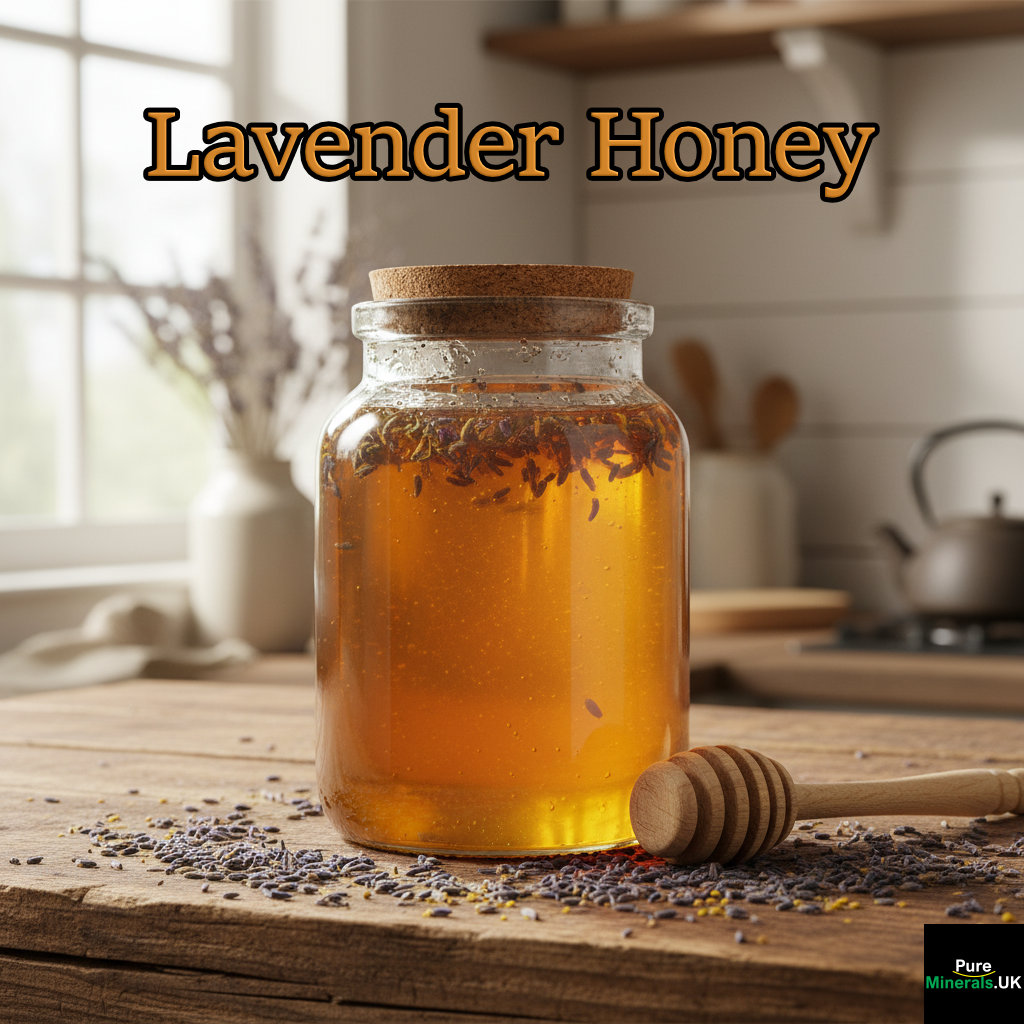
Lavender-infused honey captures the essence of both ingredients in a versatile sweetener perfect for tea, yogurt, cheese pairings, or drizzling over fresh fruit. To make it, gently warm 1 cup of raw honey until just liquid (around 110°F – never boil honey as it destroys beneficial enzymes). Add 2 tablespoons dried culinary lavender buds, stir well, cover, and let steep for 5 days at room temperature. Strain through cheesecloth, pressing gently to extract all the honey without forcing plant material through.
This infused honey develops more complex flavors over time, reaching peak intensity after about two weeks. The resulting amber liquid carries lavender’s calming properties along with honey’s own health benefits, making it both a culinary and wellness addition to your kitchen. Stored in a cool, dark place, lavender honey remains good for up to a year, though the aroma gradually diminishes after several months.
Lavender Shortbread Cookies

Shortbread’s buttery simplicity provides the perfect canvas for lavender’s subtle complexity. The key to perfect lavender shortbread is using culinary-grade lavender buds ground with granulated sugar in a food processor or spice grinder before incorporating them into the dough. This “lavender sugar” distributes the flavor evenly throughout the cookies and prevents biting into whole flower buds, which can be texturally unpleasant.
For the best balance of flavor, use 1 tablespoon of lavender buds per cup of flour in your recipe. Adding just a touch of lemon zest (about ½ teaspoon per cup of flour) brightens the lavender notes without competing with them. After baking, these cookies offer not just a delicious treat but also a subtle calming effect that makes them perfect with afternoon tea or as a gentle evening dessert.
Lemon-Lavender Ice Cream
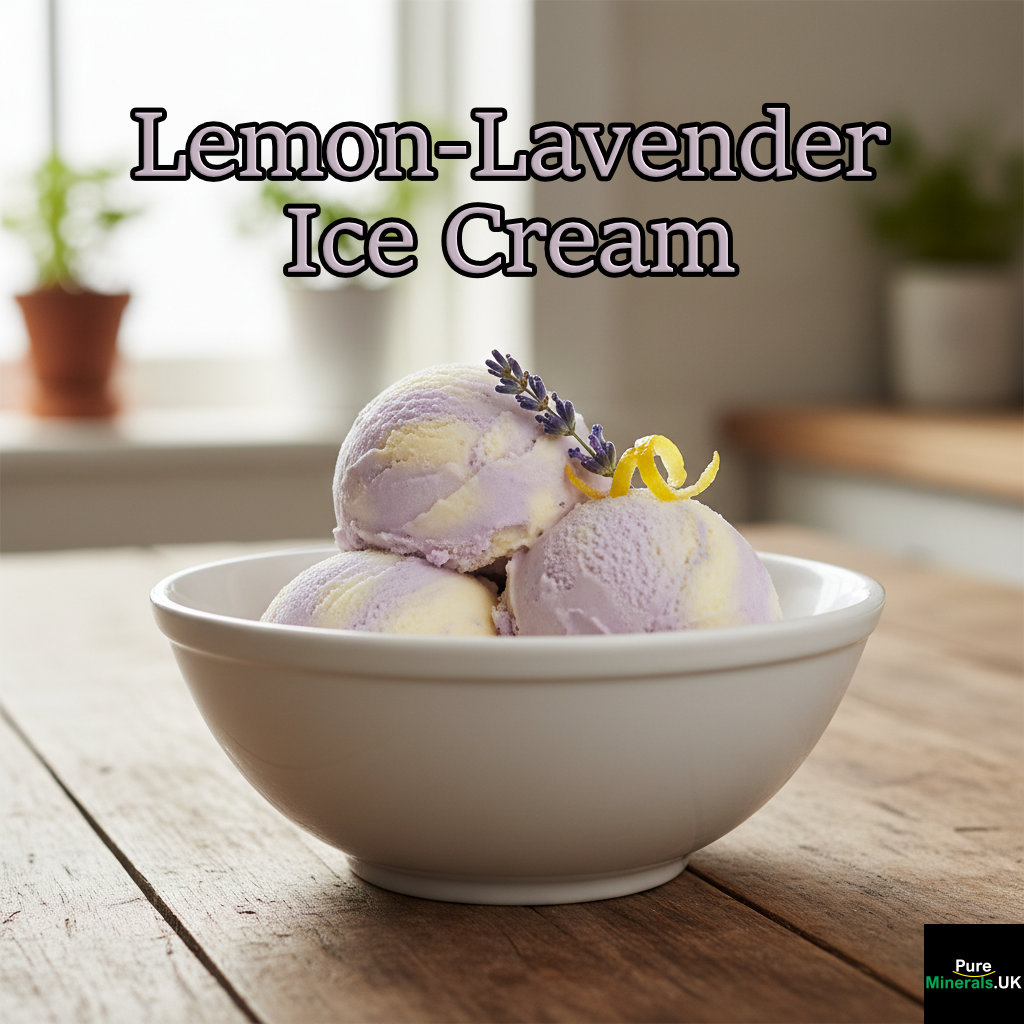
The cool creaminess of homemade ice cream showcases lavender’s aromatic qualities beautifully, especially when paired with lemon. To infuse the cream, bring 2 cups of heavy cream just to a simmer, remove from heat, add 2 tablespoons dried lavender and 2 strips of lemon zest, cover, and steep for 30 minutes before straining and proceeding with your ice cream recipe. The fat in the cream captures lavender’s essential oils perfectly, creating an even distribution of flavor.
For those without ice cream makers, a no-churn version works well with lavender. Simply infuse the cream as described, cool completely, then whip to soft peaks with ⅓ cup honey and fold into a can of sweetened condensed milk with a tablespoon of fresh lemon juice. Freeze for at least 6 hours before serving. The resulting dessert is not just delicious but offers a double dose of relaxation from both the lavender and the pleasure of indulging in homemade ice cream.
Savory Dishes That Shine With Lavender
Herbes de Provence Blends

The classic French herb mixture Herbes de Provence traditionally includes lavender along with savory, marjoram, rosemary, thyme, and oregano. This balanced blend allows lavender to contribute its unique flavor without dominating, making it an accessible entry point to cooking with this flower. For the most authentic version, combine 3 tablespoons each dried thyme and savory, 2 tablespoons dried marjoram, 1 tablespoon dried oregano, 1 tablespoon dried rosemary, and 1-2 teaspoons dried lavender buds.
This versatile mixture elevates roasted vegetables, grilled meats, and slow-cooked stews. The herbal complexity created when these ingredients merge during cooking produces a distinctly Mediterranean character that transforms ordinary dishes. For maximum flavor, crush the herbs lightly between your palms just before adding to release their essential oils, and remember that Herbes de Provence should be added early in cooking to allow proper flavor integration.
Lavender-Infused Oils
Creating lavender-infused olive oil provides a simple way to incorporate lavender’s benefits into everyday cooking without overwhelming dishes. Gently warm 2 cups of good-quality extra virgin olive oil with 3 tablespoons dried lavender buds until just warm to the touch (about 100°F), remove from heat, cover, and let steep for 2 days before straining. The resulting oil carries subtle lavender notes perfect for finishing dishes, dressing salads, or drizzling over grilled vegetables. For more herbal inspirations, you might explore the benefits of hyssop as well.
Unlike many herbal infusions, lavender oil works particularly well with Mediterranean ingredients like tomatoes, eggplant, and white beans. The floral notes complement the earthiness of these foods while adding aromatic complexity. Store the finished oil in a dark bottle away from heat and light, and use within 2-3 months for optimal flavor. Beyond its culinary applications, this oil can double as a gentle massage oil that delivers lavender’s relaxing properties directly through the skin.
Meat Rubs and Marinades
Lavender’s distinctive character pairs surprisingly well with certain meats, particularly lamb, duck, and chicken. For a simple but effective dry rub, combine 1 tablespoon dried lavender buds (finely ground), 2 tablespoons fresh rosemary, 1 tablespoon sea salt, 2 teaspoons black pepper, and the zest of one lemon. Applied 2-4 hours before cooking, this mixture permeates the meat with aromatic compounds that bloom during cooking. For an added twist, consider exploring the uses of hyssop to enhance the flavors even further.
For a wet marinade that tenderizes while flavoring, combine 2 teaspoons ground lavender with ¼ cup olive oil, 3 tablespoons honey, 2 tablespoons Dijon mustard, and 2 tablespoons white wine vinegar. This versatile blend works particularly well with poultry, infusing the meat with subtle lavender notes balanced by acidity and sweetness. The honey in this marinade helps create beautiful caramelization when grilled or roasted, while the lavender adds an unexpected aromatic dimension that elevates the dish beyond ordinary fare.
Growing Your Own Lavender: A Beginner’s Guide
Best Varieties for Both Aroma and Flavor
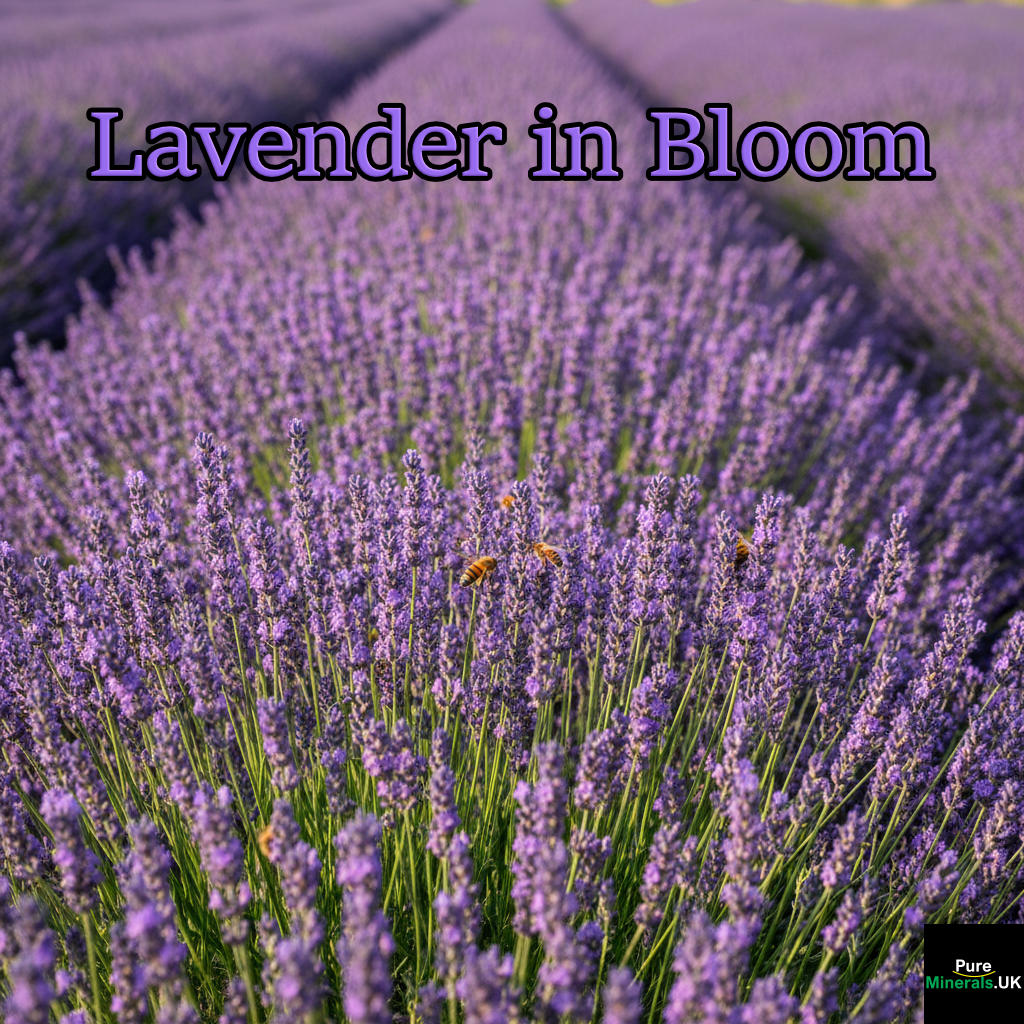
For the home gardener seeking both culinary and aromatic benefits, certain lavender varieties offer superior performance. ‘Munstead’ and ‘Hidcote’ (both Lavandula angustifolia) deliver excellent flavor for cooking while maintaining strong fragrance for aromatherapy uses. These compact English lavenders typically reach just 18-24 inches tall, making them suitable for containers or small garden spaces, and their low camphor content ensures they won’t impart a soapy taste in culinary applications.
For those in warmer climates (USDA zones 7-9), ‘Provence’ offers a robust growth habit and abundant flowering, though its slightly higher camphor content makes it better for aromatic uses than delicate culinary applications. ‘Royal Velvet’ delivers the best of both worlds with exceptionally dark, aromatic flowers that retain their color when dried and offer a clean, sweet flavor in foods. Whatever variety you choose, purchasing plants from reputable nurseries rather than generic “lavender” ensures you’ll get the specific benefits you’re seeking.
Soil and Sunlight Requirements
Lavender thrives in conditions that would stress many other plants, which explains why it produces such concentrated essential oils. The ideal growing environment includes full sun (minimum 6-8 hours daily), well-drained alkaline soil (pH 6.5-7.5), and relatively low humidity. Poor or gravelly soil actually produces more aromatic plants than rich soil, which tends to encourage leafy growth at the expense of essential oil production.
To create perfect lavender conditions, plant in raised beds or slopes if your soil tends to hold moisture. Amend heavy clay soils with plenty of coarse sand and limestone gravel to improve drainage – lavender roots will rot in wet conditions. For container growing, mix equal parts potting soil, coarse sand, and perlite, adding a tablespoon of garden lime per gallon of mix to raise pH. Lavender generally needs watering only when the soil is dry to a depth of one inch, making it an excellent choice for water-wise gardens.
Harvesting and Drying Methods
For maximum essential oil content, harvest lavender just as the buds begin to show color but before they fully open. Cut stems in the morning after dew has dried but before the day’s heat causes oils to dissipate. Use sharp scissors to cut stems just above the woody growth, gathering them into loose bundles of about 1 inch in diameter, secured with twine or rubber bands. For more information on lavender oil, check out the benefits and how to make your own.
The traditional drying method involves hanging these bundles upside down in a dark, dry space with good air circulation for 2-3 weeks. Alternatively, for faster drying, lay stems in a single layer on window screens or drying racks. Once completely dry, strip the buds by gently running your fingers down the stems over a clean paper or cloth. Store dried buds in airtight glass containers away from light and heat, where they’ll maintain potency for up to a year. For culinary uses, keep buds whole until needed, as grinding releases oils that dissipate quickly.
For more about growing lavender, click here.
Natural Remedies: Lavender Beyond Relaxation
Headache Relief Techniques
Lavender offers effective relief for different types of headaches through multiple mechanisms. For tension headaches, it relaxes tight muscles and reduces stress that may be triggering the pain. For migraine sufferers, lavender’s ability to regulate serotonin levels addresses one of the root neurological causes of these debilitating headaches. The plant’s anti-inflammatory properties also help reduce the swelling of blood vessels that contribute to many headache types.
The most direct application involves massaging diluted lavender oil (2-3 drops in a teaspoon of carrier oil like jojoba or almond) into the temples, forehead, and back of the neck. This topical approach delivers the compounds directly to local blood vessels and nerves while the aromatherapy effect works simultaneously through inhalation. For an even simpler method during acute headaches, place a drop of lavender oil on each temple and one at the nape of the neck, then rest in a dark, quiet room for 15-20 minutes while practicing deep breathing.
A cold compress enhanced with lavender provides dual relief through both aromatherapy and cold therapy. Add 5-7 drops of lavender essential oil to a bowl of ice water, soak a soft cloth, wring it out, and place it over closed eyes and forehead. The combination of cold to constrict dilated blood vessels and lavender’s analgesic properties can provide quick relief for many headache sufferers. Reapply as needed, refreshing the compress when it reaches body temperature.
For prevention rather than treatment, daily use of lavender tea may reduce headache frequency for those with chronic tension or stress-related headaches. A cup in the morning and another in mid-afternoon provides consistent low-dose exposure to lavender’s active compounds, potentially reducing the inflammation and tension that trigger headaches before they start.
Lavender Headache Relief Roller Blend
10ml roller bottle
7 drops lavender essential oil
5 drops peppermint essential oil
3 drops frankincense essential oil
Fill remainder with fractionated coconut oil
Apply to temples, forehead, and back of neck at first sign of headache.
Reapply every 30 minutes as needed to maximize the health benefits of lavender.
Skin Benefits and Applications
Lavender’s skin benefits come from its unique combination of antimicrobial, anti-inflammatory, and cell-regenerating properties. These qualities make it effective for treating minor burns, cuts, insect bites, acne, and eczema. What separates lavender from other botanical skin treatments is its ability to simultaneously calm inflammation while fighting bacteria that might cause infection – essentially addressing both symptoms and causes of skin issues. For minor burns and cuts, applying diluted lavender oil (5 drops in a teaspoon of aloe vera gel) promotes faster healing while reducing scarring through improved cellular regeneration. The antimicrobial properties help prevent infection, while the anti-inflammatory action reduces redness and swelling.
Digestive Comfort Solutions
Lavender’s antispasmodic properties make it particularly effective for digestive discomfort caused by tension and nervous system activation. It works by relaxing the smooth muscles of the digestive tract, relieving cramps, bloating, and spasms that characterize conditions like IBS and nervous stomach. Unlike some digestive herbs that work primarily on the digestive organs themselves, lavender addresses the brain-gut connection, calming the nervous system signals that can trigger digestive distress during times of stress or anxiety.
A simple lavender tea made with 1 teaspoon dried buds steeped in 8 ounces of hot water for 5-7 minutes provides gentle but effective digestive relief. For enhanced benefits, combine with other carminative herbs like fennel or peppermint. For children or those who don’t enjoy the taste of lavender tea, a gentle abdominal massage using diluted lavender oil (2-3 drops in a teaspoon of carrier oil) can provide similar benefits through topical absorption, along with the calming effect of the massage itself.
Lavender Cautions and Considerations
Despite lavender’s generally excellent safety profile, certain situations warrant caution. Its hormone-modulating effects, while mild, make it worth discussing with healthcare providers for people with hormone-sensitive conditions like some breast cancers, endometriosis, or during pregnancy. The concentrations in occasional culinary use remain well below therapeutic levels, but concentrated essential oil preparations may have stronger effects.
Quality and purity matter significantly with lavender products. Commercial lavender items frequently contain synthetic fragrance rather than actual lavender, particularly in lower-priced bath and body products. These synthetic versions provide no therapeutic benefits and may cause skin irritation or allergic reactions. Look for products specifically listing Lavandula angustifolia or Lavandula officinalis rather than just “fragrance” or “perfume” on ingredient lists, and prioritize sources that provide detailed information about their lavender’s origin and processing methods.
Potential Allergic Reactions
While true allergic reactions to lavender are relatively rare, they do occur and typically manifest as skin irritation, rashes, or respiratory symptoms when the plant is inhaled. These reactions are more common with topical use than with culinary applications, and often relate to concentrated essential oils rather than the whole plant. Anyone with a history of multiple plant allergies should conduct a patch test before widespread application, applying a small amount of diluted lavender oil (1 drop in 1 teaspoon of carrier oil) to the inner forearm and monitoring for 24 hours.
Cross-reactivity can occur in people allergic to plants in the same botanical family (Lamiaceae), which includes mint, sage, thyme, and basil. If you have known allergies to any of these plants, introduce lavender cautiously. Interestingly, some people who react to fresh lavender tolerate the dried form well, as certain allergenic compounds degrade during the drying process. Start with minimal exposure and increase gradually while monitoring for any adverse reactions.
Medication Interactions to Watch For
Lavender’s calming properties can potentially enhance the effects of medications that also depress the central nervous system, including sedatives, anxiolytics, and some antihistamines. This isn’t necessarily dangerous but may increase drowsiness beyond what’s expected from either alone. People taking medications like benzodiazepines, sleep aids, or certain antidepressants should consult healthcare providers before using concentrated lavender preparations, particularly if taking them internally as supplements rather than using them aromatically or in occasional culinary applications. For more information on the health benefits of lavender, consider reading further resources.
Safe Usage During Pregnancy
Pregnant women should approach lavender with informed moderation. Occasional culinary use and mild aromatherapy applications are generally considered safe, but concentrated essential oils used topically or internally should be discussed with prenatal healthcare providers. While lavender’s uterine-relaxing properties can be beneficial in some circumstances, they theoretically could affect labor in high doses. As with many herbs, the second and third trimesters typically present fewer concerns than the first trimester, but individual medical guidance should always take precedence over general guidelines, particularly during pregnancy.
The Perfect Balance: Combining Lavender’s Dual Benefits
The true magic of lavender lies in integrating both its culinary delights and wellness benefits into daily life. A lavender-infused honey drizzled over yogurt not only creates a delicious breakfast but also provides subtle calming effects to start the day. A bedtime routine that includes both a cup of lavender tea and a lavender pillow spray delivers multi-sensory relaxation through both ingestion and inhalation. This integrated approach amplifies benefits while making lavender usage a natural, enjoyable part of your routine rather than another “health task” to remember. Wellness solutions work best when seamlessly incorporated into life rather than added as separate obligations, and lavender’s versatility makes this integration particularly accessible for busy modern lifestyles.
Frequently Asked Questions
Lavender’s increasing popularity has led to many questions about optimal usage, safety considerations, and effectiveness for specific conditions. The following answers address the most common queries based on current scientific understanding and traditional knowledge, providing practical guidance for both beginners and experienced users. Remember that individual responses to any natural remedy vary, and personal experimentation within safe parameters often yields the best results for your unique situation.
Can lavender essential oil be taken internally?
Internal use of lavender essential oil requires extreme caution and ideally professional guidance. While some high-quality, food-grade lavender oils can be taken internally in very small amounts (1-2 drops in a full glass of water or honey), this practice carries risks, including digestive irritation and potential interactions with medications. The concentrated nature of essential oils means they’re thousands of times stronger than the whole plant form, making unguided internal use potentially dangerous.
For those seeking internal benefits, lavender tea, culinary uses, or properly formulated supplements generally provide safer alternatives with good efficacy. If you do choose internal essential oil use, only use products specifically labeled as suitable for internal consumption from reputable companies that provide detailed quality testing information. For more information on essential oils, you can explore the benefits of hyssop as well.
How much lavender should I use in cooking to avoid overpowering dishes?
The key to successful culinary lavender use lies in restraint – it should enhance rather than dominate a dish. For most recipes, start with ½ to 1 teaspoon of dried lavender buds per 4 servings or 1 cup of dry ingredients. This conservative approach allows you to adjust upward in future preparations if desired. Remember that lavender’s potency varies based on freshness, variety, and growing conditions, so even experienced cooks taste and adjust when working with a new batch. For those interested in exploring other unique flavors, you might consider trying hyssop as well.
For infusions in liquids (syrups, creams, etc.), a good starting ratio is 1 tablespoon dried buds per cup of liquid, steeped until the desired flavor is achieved (usually 15-30 minutes), then strained completely. When using lavender with other strong herbs like rosemary or thyme, reduce the lavender proportion slightly to prevent it from overwhelming the blend. Ground lavender is significantly more potent than whole buds, so reduce quantities by about half when using it in this form. For more on using herbs in cooking, check out this guide on allspice health benefits and uses.
Does lavender lose its benefits when dried?
While some compounds in lavender degrade during drying, properly dried lavender retains most of its therapeutic properties for 6-12 months. The essential oil components responsible for calming effects remain stable in dried form, though their concentration gradually diminishes over time. For maximum benefit, store dried lavender in airtight containers away from heat, light, and moisture, and replace your supply annually. Fresh lavender contains slightly higher levels of some volatile compounds, but dried lavender offers convenience, accessibility, and good therapeutic value when properly prepared and stored. If you’re interested in other herbs with therapeutic benefits, you might want to explore fennel as well.
Are there any pets that shouldn’t be exposed to lavender?
Cats are particularly sensitive to essential oils, including lavender, due to their limited ability to metabolize certain compounds. Direct application of lavender essential oil to cats can cause serious liver damage, and even diffused oils can be problematic in enclosed spaces without adequate ventilation. While dried lavender plants generally pose minimal risk to cats, essential oil products should be used with extreme caution in households with feline companions.
Dogs tolerate lavender better than cats, but concentrated essential oils should still be used judiciously around canine pets. Never apply undiluted oils directly to any animal, and ensure they have access to oil-free spaces when diffusing. For both dogs and cats, ingestion of lavender plants typically causes only mild digestive upset, if any, but essential oils can be toxic if licked or consumed. When using lavender around pets, opt for lower-concentration methods like dried plants rather than concentrated oils, and monitor for any adverse reactions, including respiratory distress, excessive drooling, or lethargy.
What’s the difference between English, French, and Spanish lavender?
English lavender (Lavandula angustifolia) produces the sweetest, most delicate fragrance with low camphor content, making it ideal for culinary uses and premium aromatherapy applications. Its compact growth habit (typically 1-2 feet tall) and excellent cold tolerance (to USDA zone 5) make it the most widely grown variety in northern regions. This species contains the highest concentration of linalool and linalyl acetate – the compounds primarily responsible for lavender’s calming effects – making it the preferred choice for therapeutic applications.
French lavender (Lavandula dentata) features distinctive toothed leaves and pine-like camphor notes in its fragrance, making it less suitable for culinary use but excellent for aromatic applications where a stronger scent is desired. It grows larger than English varieties (often 2-3 feet tall) and tolerates higher humidity but has poor cold tolerance (generally USDA zones 8-11). While less studied for therapeutic benefits, it still offers good insect-repellent properties and makes an attractive ornamental with extended blooming periods in suitable climates.
Spanish lavender (Lavandula stoechas) is immediately recognizable by its distinctive “rabbit ear” bracts atop each flower spike, creating a showier appearance than other varieties. Its strong, almost resinous scent contains high camphor levels that make it unsuitable for culinary use but excellent for strong-scented products like soaps and cleaners. Like French lavender, it prefers warmer climates (USDA zones 7-10) and can bloom nearly year-round in frost-free areas, though its therapeutic applications focus more on antiseptic properties than on the calming effects for which English lavender is prized.
For most home uses combining both culinary and wellness applications, English lavender varieties remain the gold standard, offering the broadest range of benefits with the mildest, most versatile fragrance profile. Commercial production often uses Lavandin hybrids (Lavandula x intermedia) – crosses between English and spike lavender that produce higher essential oil yields but with a sharper, more camphoraceous scent better suited to commercial fragrances than therapeutic or culinary applications.
Discover more ways to incorporate lavender into your wellness routine with Lavender Fields Natural Solutions, where we’ve been cultivating the finest organic English lavender varieties for both culinary and therapeutic uses since 2005. Additionally, explore our guide on allspice health benefits to enhance your culinary creations.
Home
